DJI Mini 4 Pro review: world’s best-value high-end consumer drone
A top pro-style mini consumer drone for taking hi-res aerial imagery

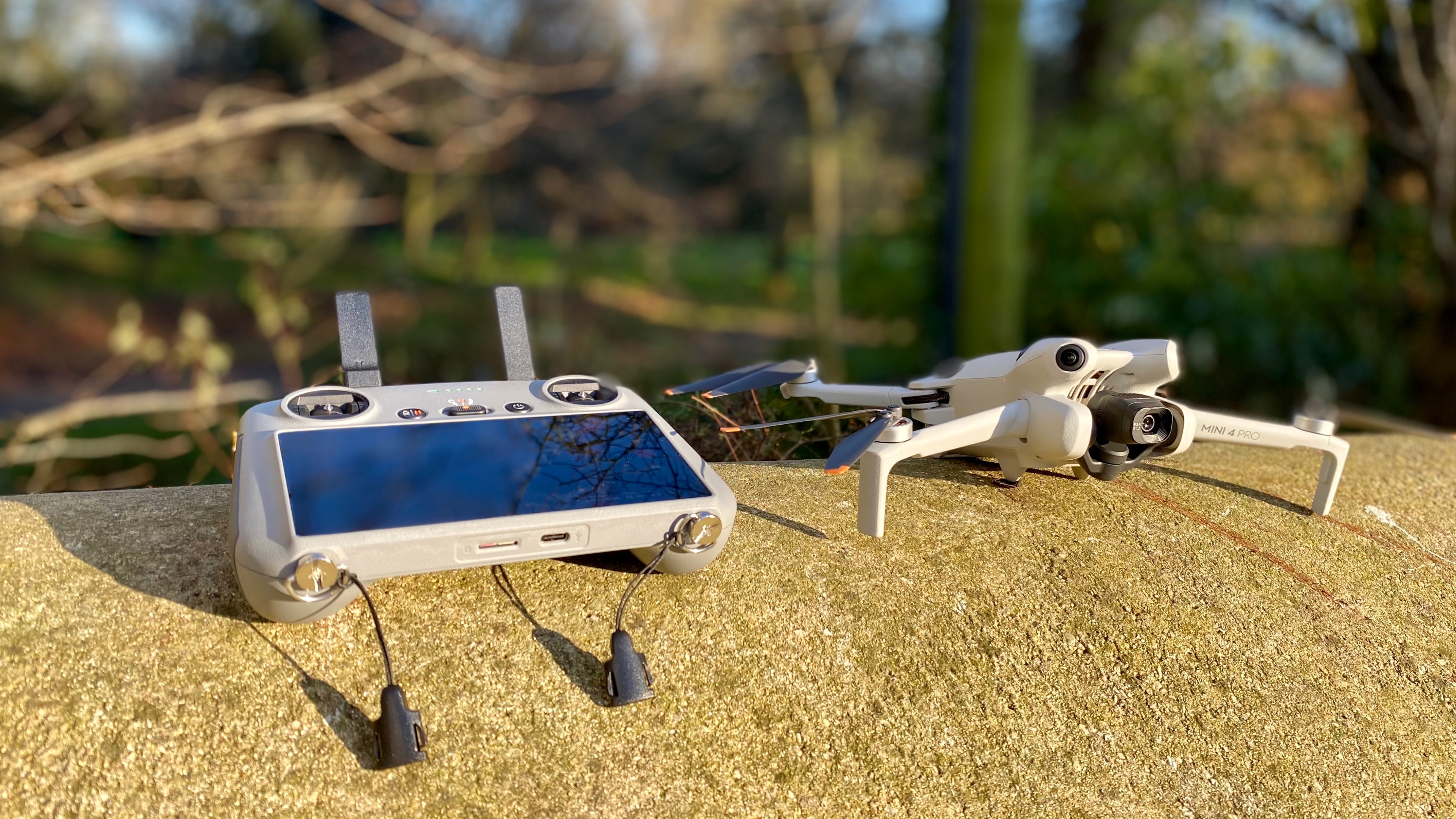
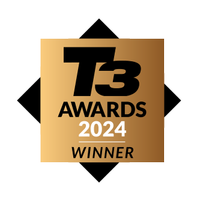
If you’re shopping for a great-value drone that’s small enough to fit in a handbag, capable of shooting sensational 4k video and amazingly sharp high-res still images while ducking beneath the majority of the UK’s official drone regulations, look no further than the DJI Mini 4 Pro. There’s nothing on the market quite like it.
-
+
Ideal consumer drone
-
+
Exceptional camera
-
+
Superb performer
-
+
Brilliant feature set
-
+
Under 250g in weight
-
-
Not the cheapest mini drone you can buy
Why you can trust T3

Welcome to T3's DJI Mini 4 Pro review, an inestimable sub-250g paragon of aerial cinematography that has so impressed this reviewer he’s since gone out and bought one.
I’ve reviewed or flown every drone in DJI’s commendable roster, from the very first Phantom all the way through to the current Mavic 3 Pro – and you can read about most of them in our comprehensive guide to the best camera drones – but I somehow never got around to addressing this titchy titan. Until now.
Had I been a professional drone pilot with a raft of real estate and TV commissions under my belt, I would most likely have bought the amazing DJI Mavic 3 Pro with its incredible three-lens Hasselblad camera setup instead of the titchy Mini 4 Pro.
But I’m not a pro; I’m an ordinary person who loves taking high-quality 4K aerial videos and high-res still images at home and away so I can have some fun editing them before sharing the results with family, friends and, in some instances, my social media fraternity. For me, the DJI Mini 4 Pro’s amazing camera is more than good enough for my needs.
However, camera quality wasn’t the only governing factor in my decision to buy a Mini 4 Pro instead of a Mavic 3 Pro. Just as important for me is the fact that this little drone weighs only 249 grams, which in many countries means you don't need additional licences to fly it. Figure in its diminutive size and eminent portability, and I know I’ve made the right choice.
[First reviewed Jan 2024]
DJI Mini 4 Pro review: price and availability
The DJI Mini 4 Pro is available in three different packages which you can read about in more detail in the next chapter, under ‘what's in the box?’.
The basic package – DJI Mini 4 Pro (DJI RC-N2) – comprises the drone and DJI’s standard controller which requires a smartphone to operate. In the UK you can purchase this package for £689 direct from the DJI or from Amazon where it’s selling for marginally less, £679. If you’re shopping in the USA, try DJI direct or Amazon where it’s selling for $759. And if you live in Australia, head for that country’s DJI store where it’s retailing for AUD $1,119.
If you prefer to fly the Mini 4 Pro with DJI’s amazing RC 2 controller with built in screen but don’t need any extra batteries or a charging hub, go for the DJI Mini 4 Pro (RC 2) option which sells in the UK at around £869 direct from DJI. Alternatively, visit Argos or Amazon. Shopping in America? Try DJI or Amazon US where it sells for $959. Aussies can grab theirs at DJI for AUD $1,419.
The last and best option for most flyers is the DJI Mini 4 Pro Fly More Combo we’re reviewing here. In the UK this bundle retails at £979 and is available direct from the DJI Store, Argos and Curry’s. For a cheaper deal, head over to Amazon and Drones Direct where it’s selling for a knockdown £948. The same package is also available in the US from DJI for $1,099 or Amazon which sells an even larger bundle for $1,269. If you’re an Australian resident, head for your local DJI store where it’s going for AUD $1,699. Sadly this package is currently unavailable at Amazon AU.
DJI Mini 4 Pro review: what's in the box?
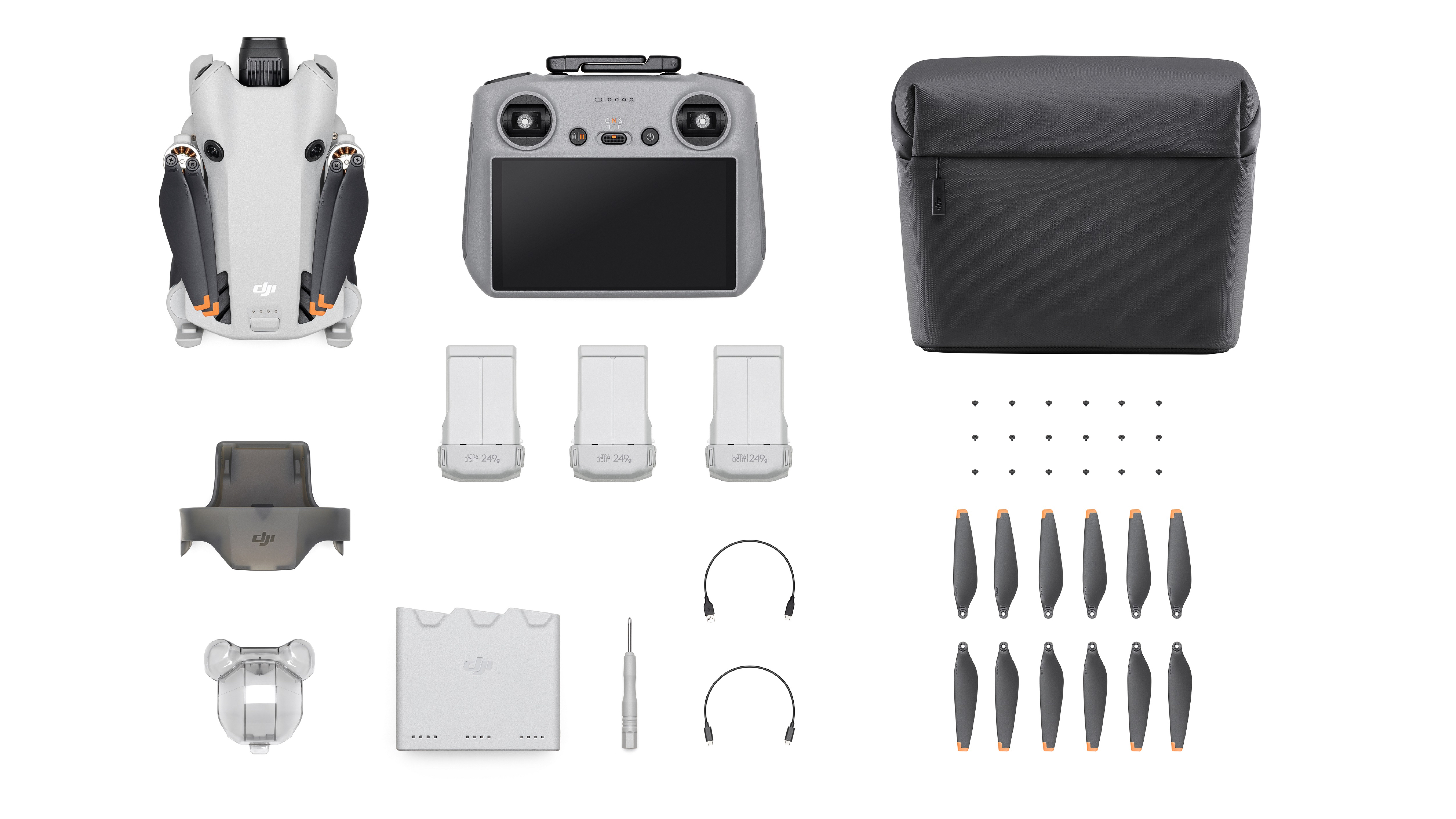
I personally wouldn’t advise opting for the cheapest DJI Mini 4 Pro (DJI RC-N2) package because it comes with DJI’s standard controller, which requires attaching a phone. If you can’t stretch the budget to the Fly More Combo variant we’re reviewing here, perhaps opt for the Mini 4 (DJI RC 2) option, which ships with the drone and DJI’s much better standalone RC 2 controller with built-in monitor, plus a few spare props and, for what is likely to be a short period, a free shoulder bag.
However, this latter package only comes with a single battery. I guarantee you will need an extra battery at some point and possibly a three-way charging hub, too, which is why I think the best package option is the DJI Mini 4 Pro Fly More Combo (DJI RC 2) which ships with the brilliant RC 2 controller, three batteries, a three-way charging hub, natty shoulder bag and spare props. This package will set you up for all future scenarios, with plenty of battery juice on tap for longer flying sessions.
DJI Mini 4 Pro review: design
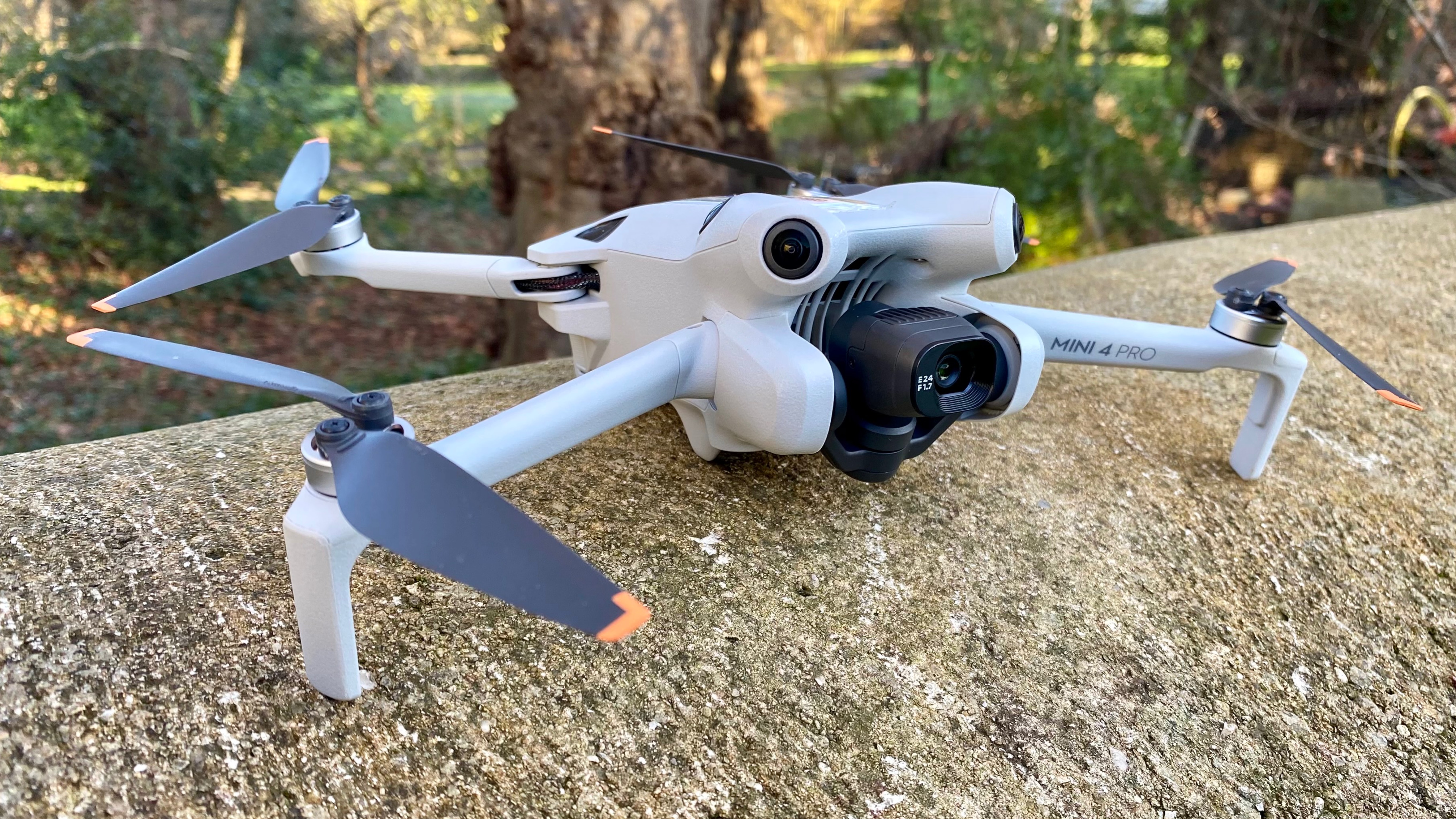
The newish DJI Mini 4 Pro is stockier in stature than its stablemate, the DJI Mini 3 Pro, but most of this has to do with the Mini 4’s new omnidirectional sensors, which give the drone a comical bug-eyed appearance. Both drones weigh in at a featherlight of 249 grams.
Although not very noticeable to the naked eye, the Mini 4 Pro is marginally bigger than the Mini 3 Pro, but only by a few millimetres. Consequently, it’s just as transportable, and that means you’ll likely take it to more places with you instead of leaving it at home. For the record, the Mini 4 measures 148×94×64mm when folded and 298×373×101mm when unfolded.
See the full comparison between the Mini 4 Pro and its predecessor here: DJI Mini 4 Pro vs DJI Mini 3 Pro.
DJI Mini 4 Pro review: features
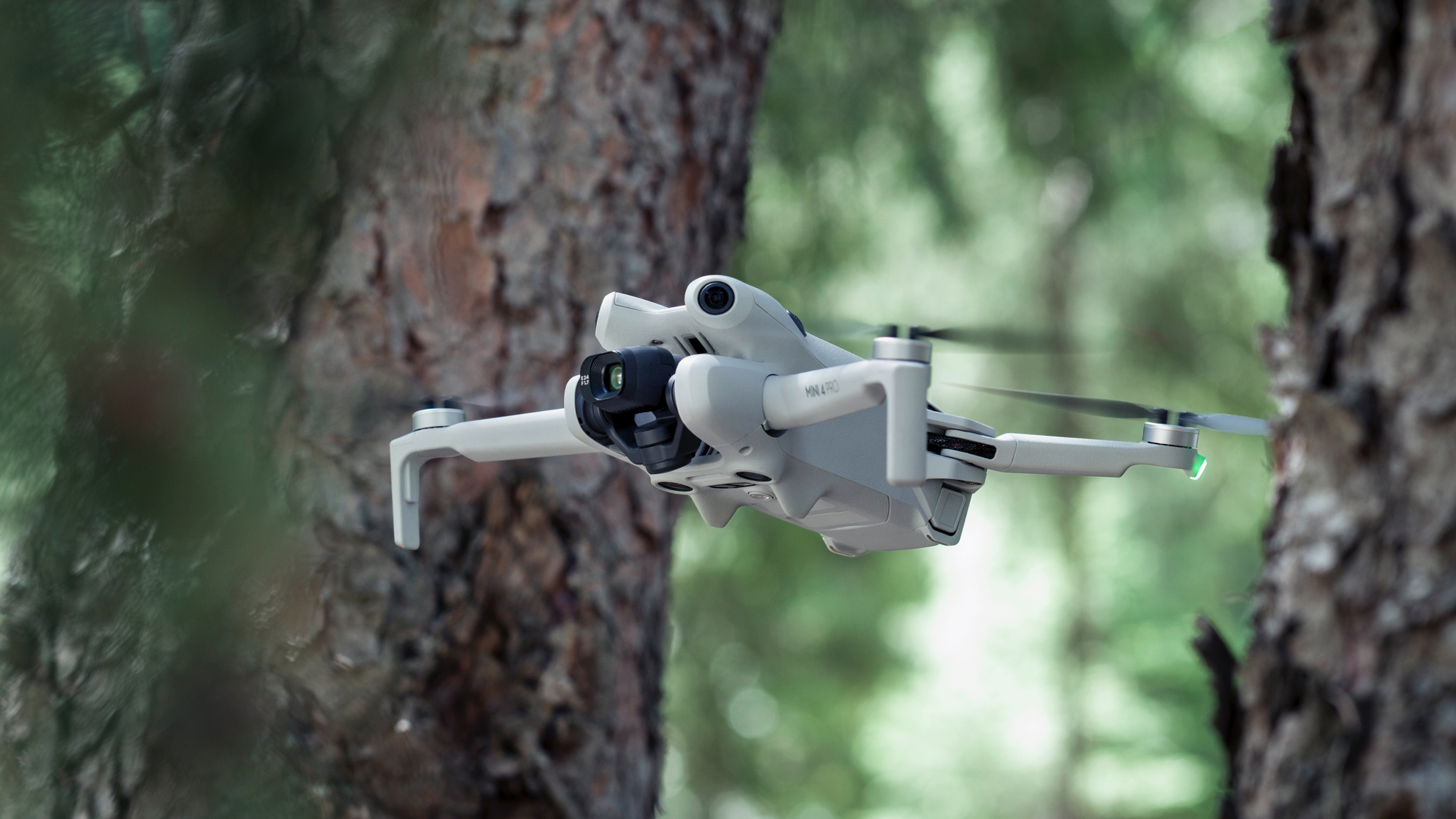
The DJI Mini 4 Pro comes with omnidirectional obstacle avoidance
The Mini 4 Pro has much better obstacle avoidance than its sibling, the Mini 3 Pro. Where the Mini 3 Pro has forward, backward and downward sensing, the Mini 4 Pro comes with an ‘omnidirectional binocular vision system supplemented with a 3D infrared sensor at the bottom of the aircraft’.
This means it can see in every direction and stop the drone in its tracks if any of the sensors detect an obstacle. Moreover, the latest firmware update now includes a vision assist system which lets the pilot see a black-and-white image from any one of its four side-facing sensors. This means that while you focus on the action from the main front-mounted camera, you can keep a beady eye on any obstacles to the front, the rear, the left and the right. Ingenious!
The Mini 4 Pro shares the same flight characteristics as the Mini 3 Pro so you get a top speed of around 36mp in Sport mode and a running time of about 34 minutes, which is more than enough time for the vast majority of cinematic shoots.
DJI Mini 4 Pro review: camera
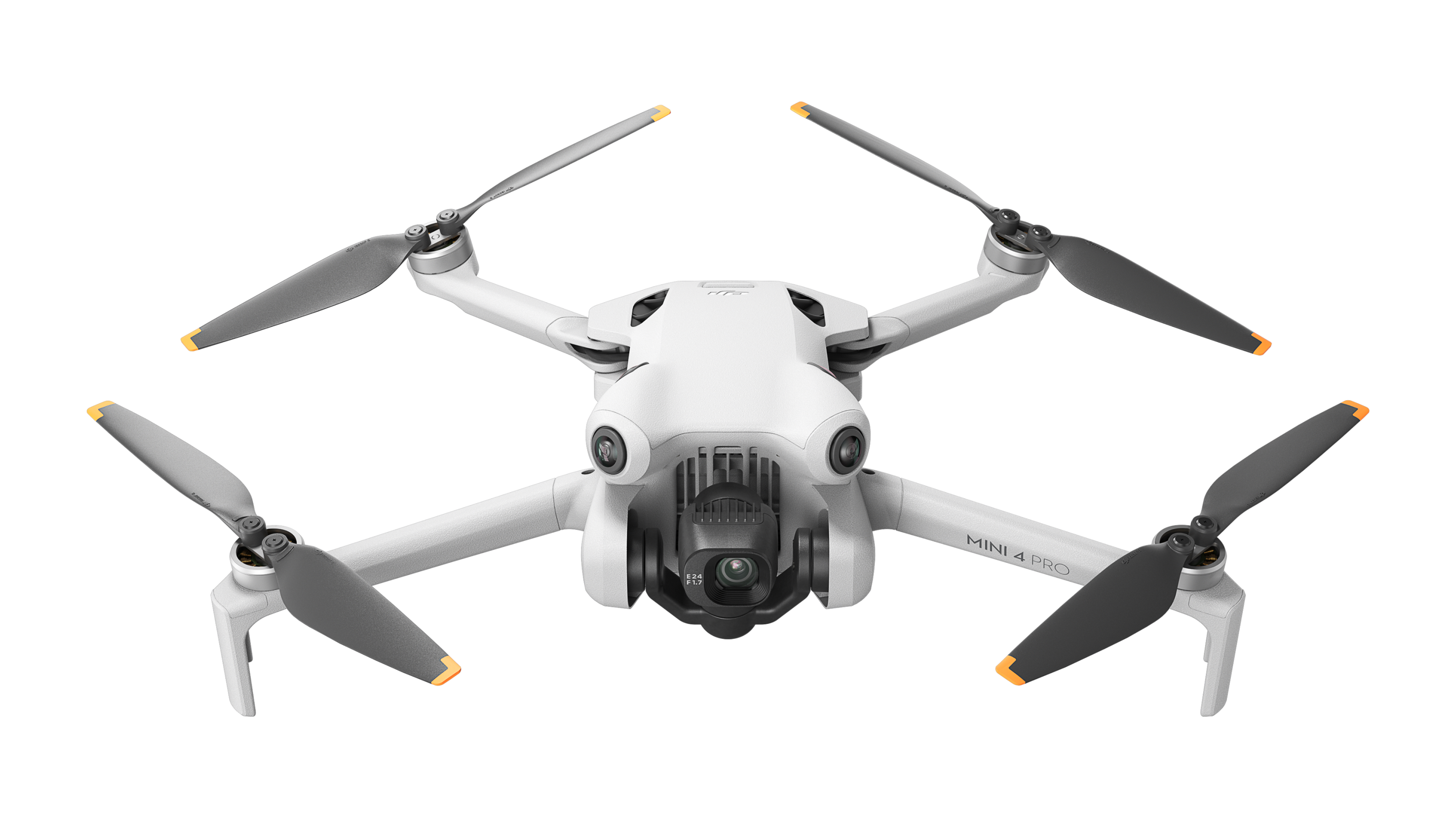
Surprisingly, the Mini 4 Pro’s camera is the same as that on the Mini 3 Pro. It’s a 1/1.3-inch CMOS unit with an ‘effective pixel’ count of 48MP and two main video resolutions – 4K at 24/25/30/48/50/60/100 frames per second and 1080 at 24/25/30/48/50/60/100/200 fps. Crucially, the Mini 4 Pro’s camera can also record in 10-bit HLG and D-Log M for more effective post processing and it has much better night shooting capabilities than the Mini 3 Pro (ISO up to 12800).
Overall video quality is frankly gobsmacking given the size of the camera but it’s the new night video mode that truly impresses with its rich detail in even the lowest lighting conditions. For me this camera is easily good enough to capture vistas or objects in crisp 4K detail and show the sensational results on any 27-inch computer monitor without noticing anything untoward in the pixel department – a testament to just how much camera technology has evolved.
DJI Mini 4 Pro review: RC 2 controller
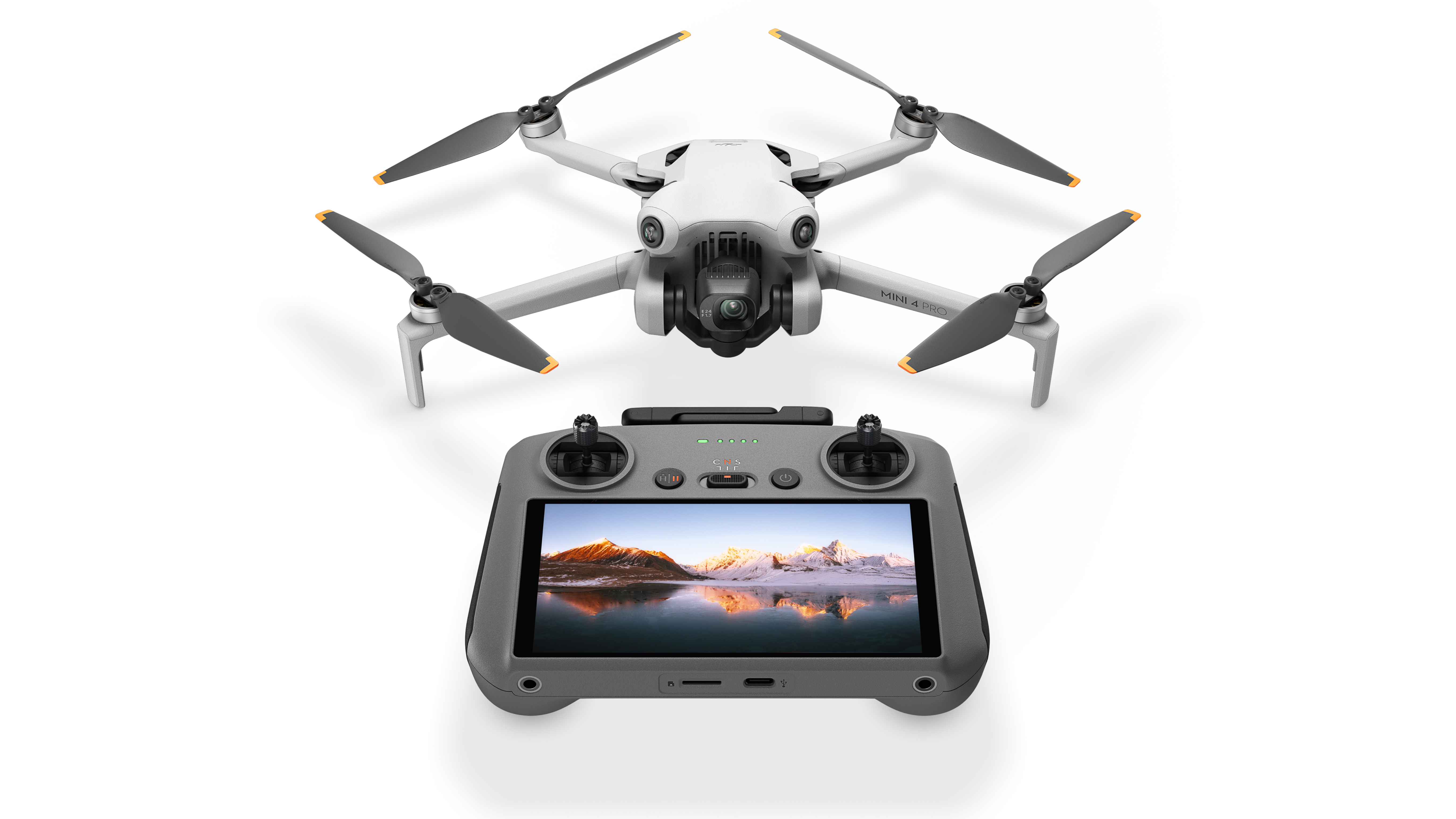
The Fly More Combo comes with DJI's superb RC 2 controller
This Fly More Combo version comes with the amazing standalone DJI RC 2 controller with built-in 5.5-inch screen. This writer cannot emphasise enough how much better this controller is when compared to the optional RC-N2 standard controller that requires the attachment of a smartphone. It means you can be up and running in under a minute and never be hassled by phone calls, news notifications and What’s App messages. The RC 2’s screen has a resolution of 1920×1080 and 700 nits of brightness which is suitable for use in direct sunlight.
Crucially, the RC 2 provides all the control elements of the standard controller, including a built-in DJI Fly app. However, it also features two customisable buttons on the rear which can provide instant access to options like ‘Cruise Control’ – simply start your flight, tap an assigned button and the drone will continue on that trajectory until you stop it – and instant gimbal movement from straight down to straight ahead, and vice versa.
DJI Mini 4 Pro review: DJI Fly app
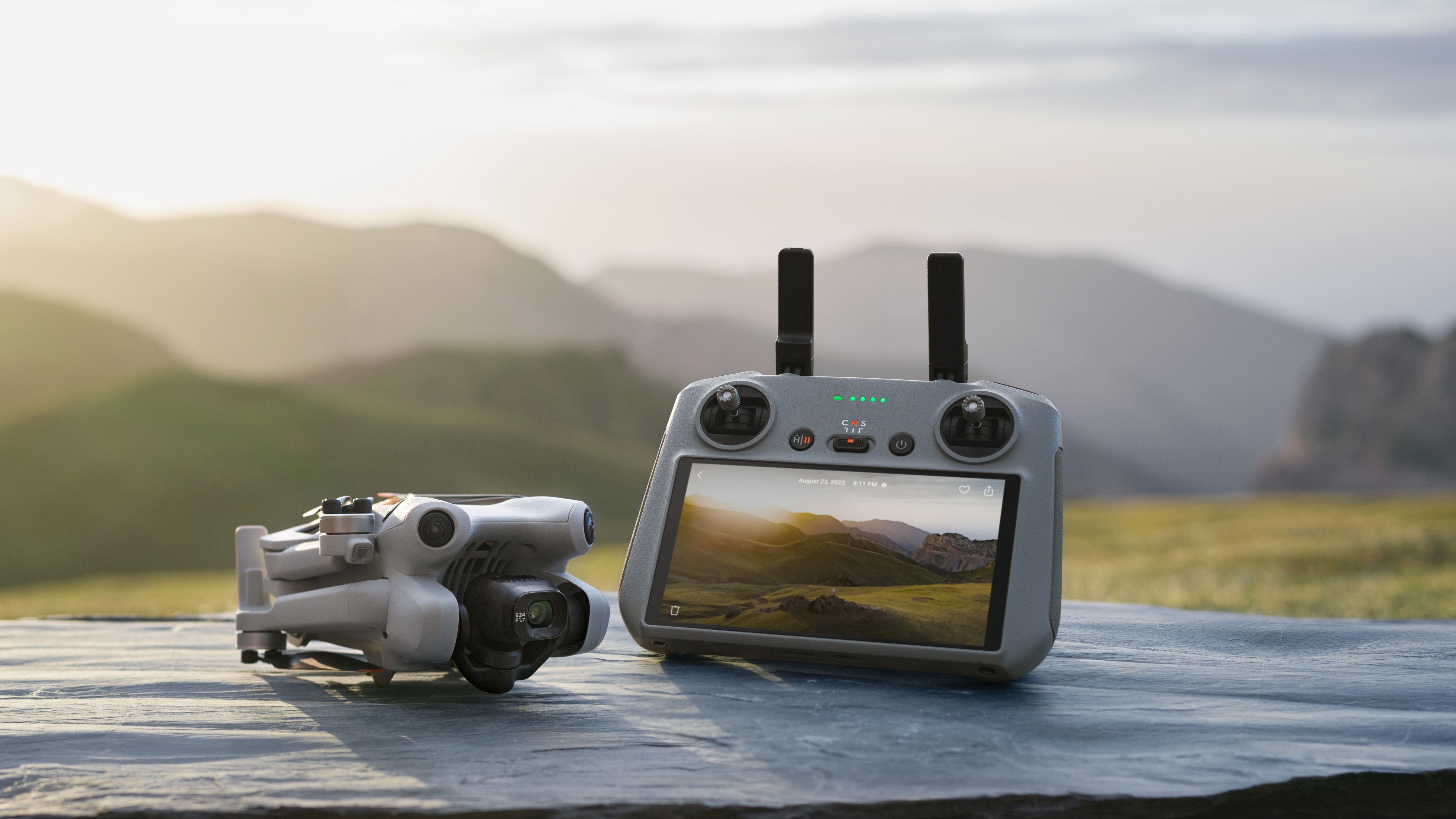
Once you’ve got a handle on it, the DJI Fly app is an amazing interface that not only displays the image from the nose of the drone in crisp detail, it also allows you to adjust a huge range of parameters, including gimbal speed and smoothness, the drone’s pitch and yaw and a myriad of camera settings, from full auto to complete manual control.
The app also provides access to DJI’s incredible follow-me ‘active track’ function with fully customisable autonomous flight paths plus the usual range of amazing quick shots, including orbit, zoom, dronie etc. If you prefer to set your flight using memorised waypoints, you can do that too.
For extra safety, the app also features AirSense which lets the drone pilot know if there's a piloted aircraft in the vicinity. You will also get an altitude warning if in the vicinity of an airfield.
DJI Mini 4 Pro review: performance
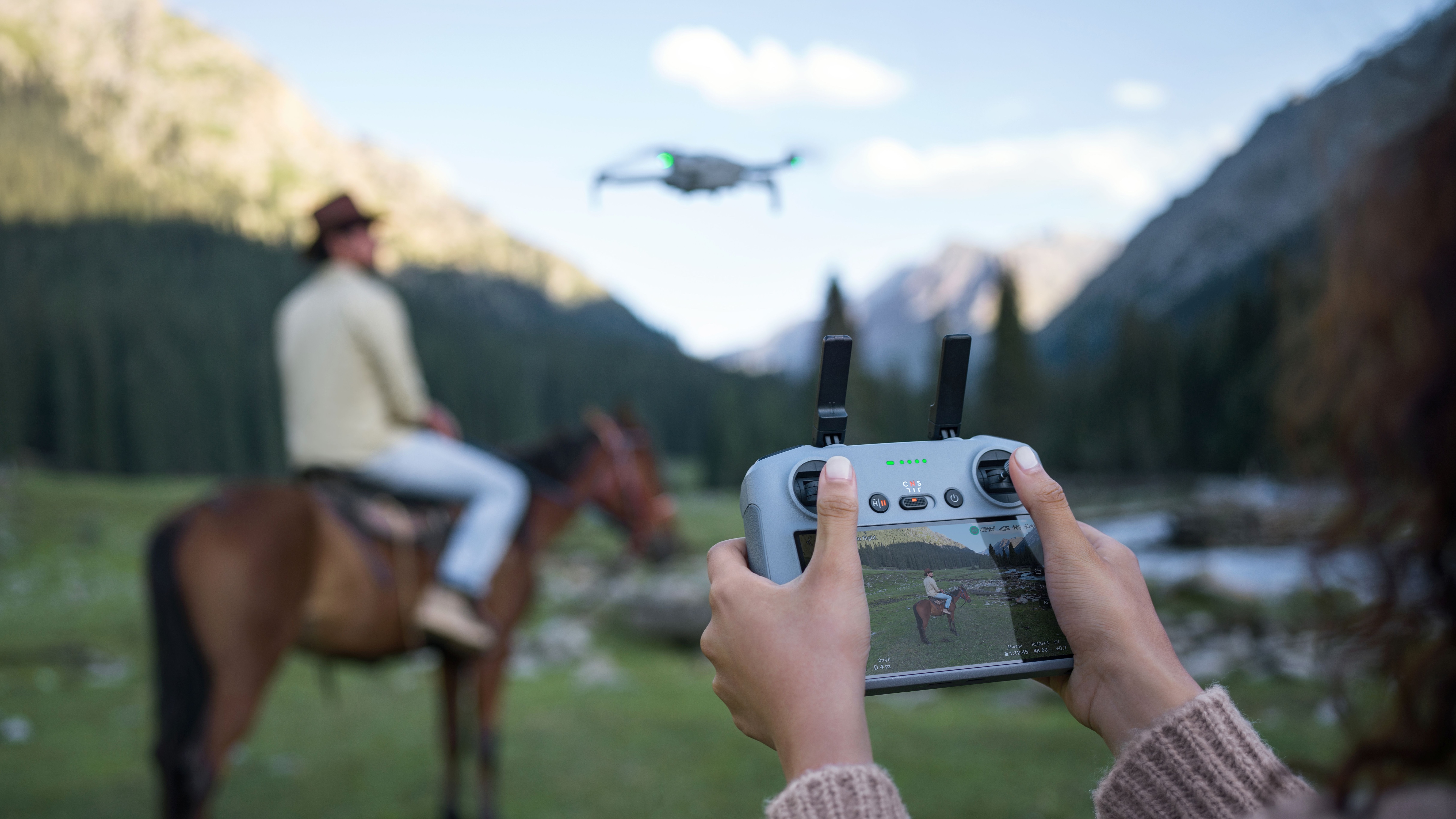
The great thing about DJI drones is that they all behave in the same way. In fact, flying this drone feels as smooth as driving an automatic car. Everything is so beautifully dialled so the drone moves off slowly with no sudden surprises. Like most pilots, you will probably feel nervous the first time you put it in the air, but once you’ve noticed how rocks steady it is, even in a stiff breeze, and how smooth the controls are, all sense of nervousness quickly vanishes. And then the fun begins.
One of the biggest issues with large drones like the Mavic 3 Pro is how noisy they are. And this noise always attracts unwanted attention. By stark contrast, the Mini 4 Pro is so wonderfully hushed you can’t hear it at all when it’s just 100 feet away. Even when close, the sound frequency its props generate is much more pleasing to the ear than almost any other drone I’ve ever reviewed.
Another winning facet is this drone’s incredible capacity to follow the user when in ‘active track’ mode. Not only is this drone capable of following the user through quite dense vegetation thanks to its impeccable obstacle avoidance, but it can even navigate around obstacles instead of coming to a halt or worse, crashing into them.
If you’re a little apprehensive about flying a drone like this for the first time, you’re in for a big surprise because this one is so easy even an ape could fly it. And that’s no slight on our distant cousins.
DJI Mini 4 Pro review: where can you fly it?
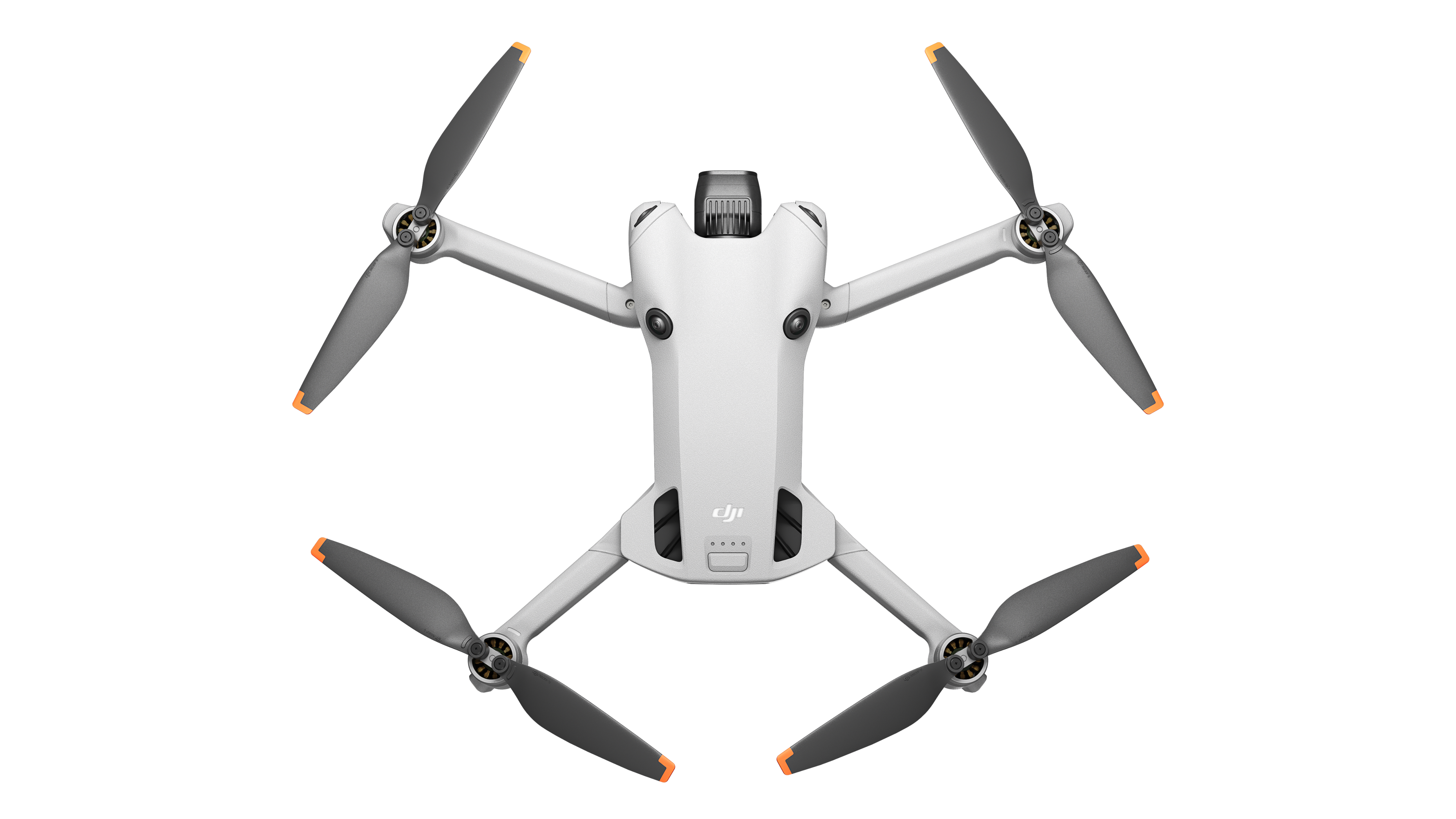
Like any consumer today, you have to ask yourself whether you want to spend the extra £800 or so on a Mavic 3 Pro that is hamstrung by a raft of official rules and regulations or whether you just want to fly pretty much anywhere you like without breaking any drone laws. Given that the sub-250g Mini 4 Pro falls under the CAA’s Open A1 and A3 classes – basic, low-risk flying – all you need is an Operator ID at a cost of around £10 per annum.
However, you will need to be age 18 or over. According to the CAA’s registration requirements for drones and model aircraft, the DJI Mini 4 Pro does not require a Flyer ID which involves an admittedly easy online multiple choice exam to prove ‘you’ve passed a basic flying test and know how to fly safely and legally’.
What all this means is that once your Operator ID number is fixed to your Mini 4 Pro, you can legally fly this drone at most residential, recreational, commercial and industrial sites, including residential buildings, housing estates, villages, cities, towns, tourist attractions, sports facilities, beaches and parks, theme parks (if they allow it), various commercial properties and even industrial sites like factories, docks and transport hubs. Try that with any drone over 250 grams, and you’ll be on the receiving end of the full force of the law.
There are two main regulations, however, that cover all drones – altitude limit and line of sight. Given that manned aircraft have to stay above 500 feet unless landing or taking off, it’s only right that all drones should be restricted to an altitude of 400 feet (120m) from ground level – no matter the shape of the terrain.
A maximum flight altitude of 400 feet is already set in the DJI Fly app, but if you change it to a higher altitude, a warning will pop up on the screen to remind you that you would be breaking the law if you change the altitude parameter to above 400 feet. I personally think a 400-foot limit is more than high enough for pretty much all aerial cinematography exercises. In fact, I rarely fly higher than 300 feet in any one flight.
The other important regulation is that the drone must always be flown in line of sight. This means being in visual contact with the drone at all times. Although the DJI Mini 4 Pro is quite capable of flying a phenomenal 8.6 miles (18km), I would never dream of taking that kind of risk for both legal and safety reasons.
DJI Mini 4 Pro review: verdict
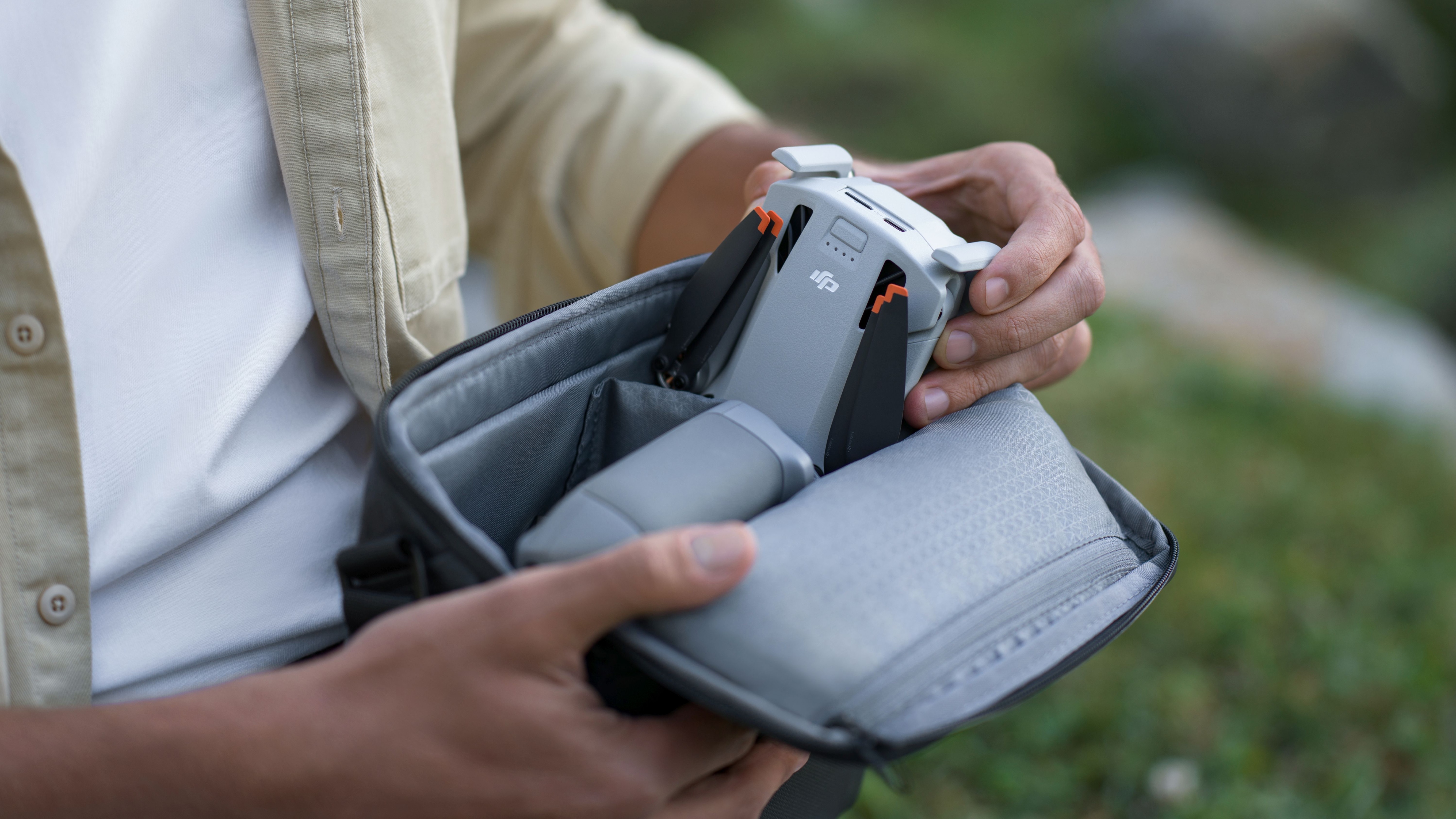
Although the DJI Mini 4 Pro is mini by nature, there’s nothing mini about its flight and camera performance which are nothing short of sensational. Seriously, if you’re thinking about buying your first ever camera drone but can’t decide which is the best model for you, make a beeline for this model because right now it’s the best sub-250 gram drone money can buy.
Sign up to the T3 newsletter for smarter living straight to your inbox
Get all the latest news, reviews, deals and buying guides on gorgeous tech, home and active products from the T3 experts
Derek (aka Delbert, Delvis, Delphinium, Delboy etc) specialises in home and outdoor wares, from coffee machines, white appliances and vacs to drones, garden gear and BBQs. He has been writing for more years than anyone can remember, starting at the legendary Time Out magazine – the original, London version – on a typewriter! He now writes for T3 between playing drums with his bandmates in Red Box (redboxmusic).
-
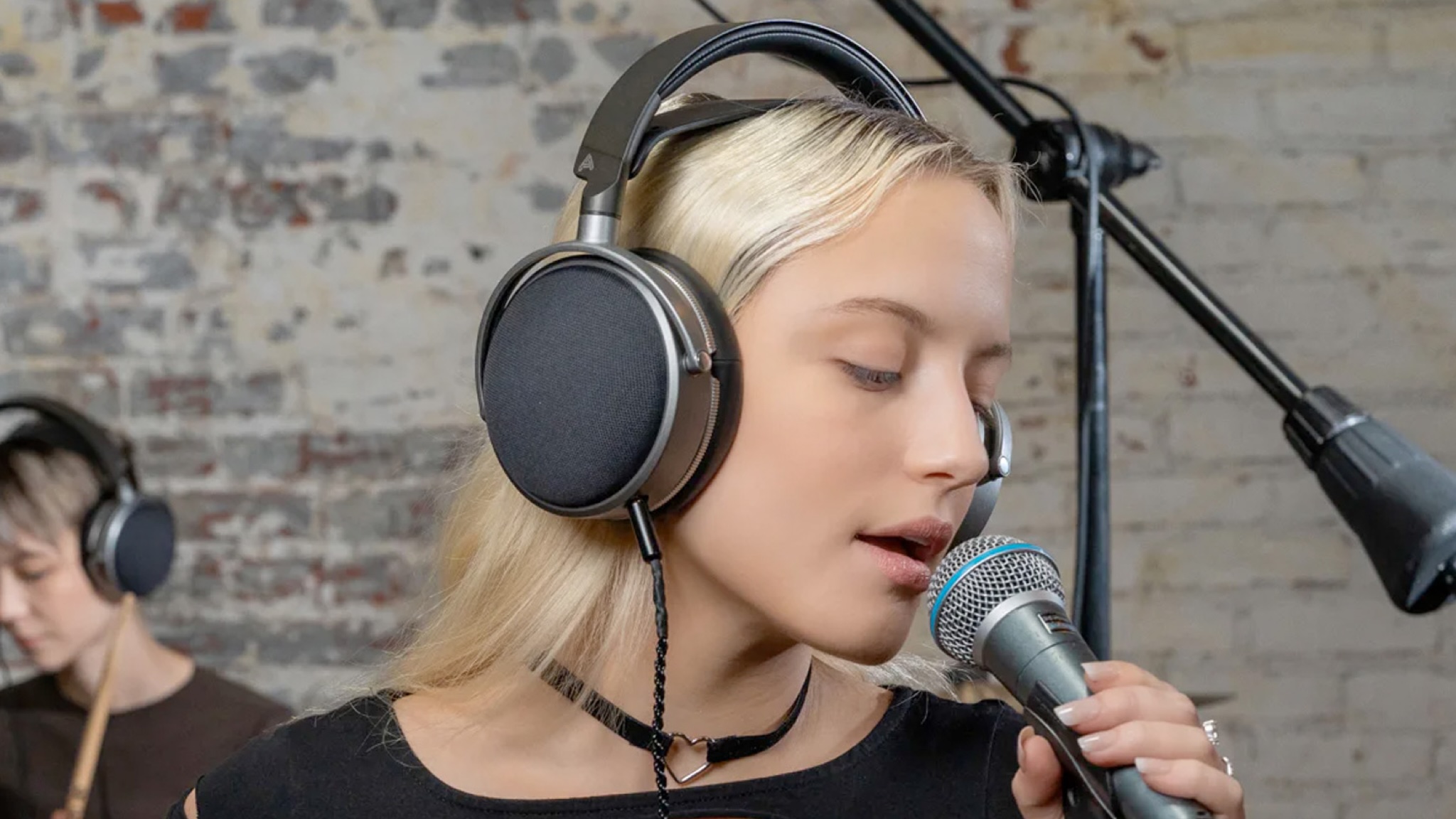 Audeze’s new planar headphones promise studio-quality sound without a sky-high price
Audeze’s new planar headphones promise studio-quality sound without a sky-high priceThe new LCD-S20 closed-back headphones are Audeze's most affordable premium planar headphones yet
By Carrie Marshall Published
-
 Shark launches its smallest NeverChange Air Purifier yet – but it’s still just as powerful
Shark launches its smallest NeverChange Air Purifier yet – but it’s still just as powerfulShark reinvents its NeverChange Air Purifier in a new compact size
By Bethan Girdler-Maslen Published
-
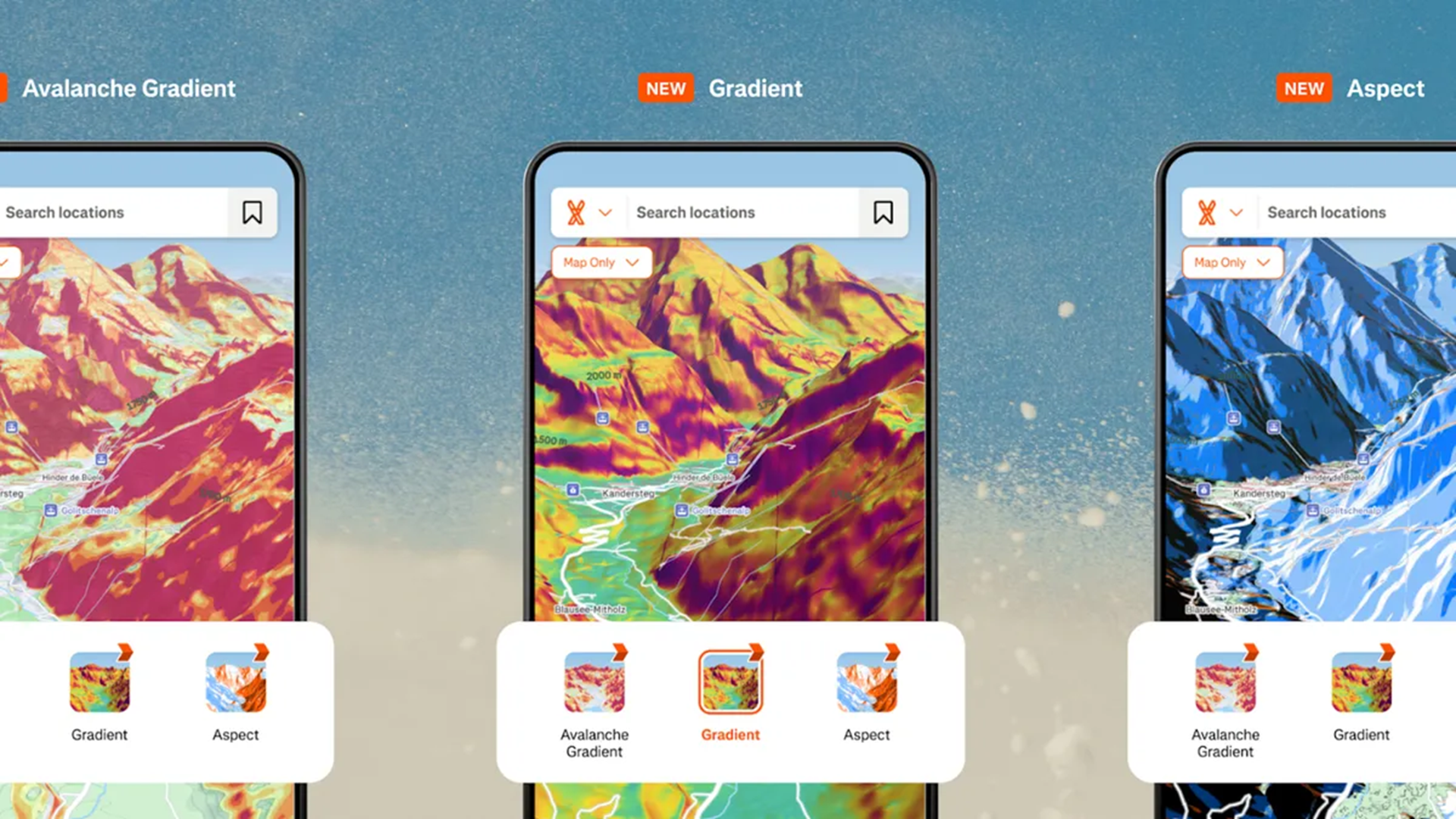 Strava gets major refresh with new map engine, searchable routes and tappable stickers
Strava gets major refresh with new map engine, searchable routes and tappable stickersLatest app update is a big win for planners, trackers and stat geeks
By Lee Bell Published